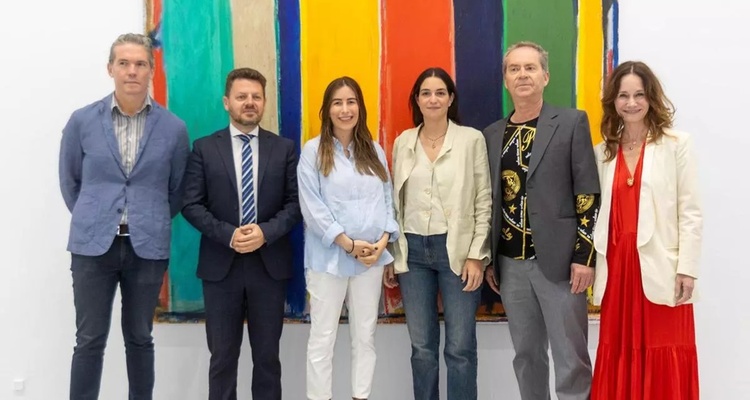
The new CAAC exhibition dedicated to Manuel Salinas
'Strict abstract', the new CAAC exhibition dedicated to Manuel Salinas
Curated by Pepe Yñiguez, the exhibition covers, through a selection of nearly 90 works, the career of the Andalusian painter
The Andalusian Center for Contemporary Art (CAAC), dependent on the Ministry of Tourism, Culture and Sports, presents from May 9 to September 22, 2024 the exhibition on the artist Manuel Salinas Strict Abstract, an exhibition that brings together an anthological selection of his work curated by Pepe Yñiguez. This is a unique retrospective that delves into the most outstanding work of the Sevillian painter, from his beginnings to his last works, a year before his death, details the CAAC in a press release.
With this exhibition, which can be visited in the South Claustrón of the exhibition space, the CAAC continues the line of work of disseminating established Andalusian artists by holding retrospectives of the works of Gerardo Delgado, Carmen Laffón, Luis Gordillo, Guillermo Pérez Villalta or Alfonso Albacete, among others, affirming its commitment to contemporary Andalusian creation and its artists. The presentation was attended by the Secretary General for Culture, José Vélez, the director of the CAAC, Jimena Blázquez, and the curator of the exhibition Pepe Yñiguez.

Manuel Salinas Milá (Seville, 1940-2021) is one of the most important Spanish abstract painters of the last quarter of the 20th century and the first decades of the current one. The exhibition, which brings together nearly 90 works -among which are works on canvas, paper or board, paintings, watercolor charcoals, some drawings on paper and engravings-, covers a journey from his first works, where the artist had barely 22 years old and exhibits at the La Rábida Club his first portraits, the result of self-taught work, until his latest works where Salinas has appropriated the best of the language of abstract expressionism, unifying in his work “the vibration and tension of spaces of color of Rothko and the immediacy and expressive urgency of Pollock, to create a personal synthesis that reconciles both aspects,” says Yñiguez.
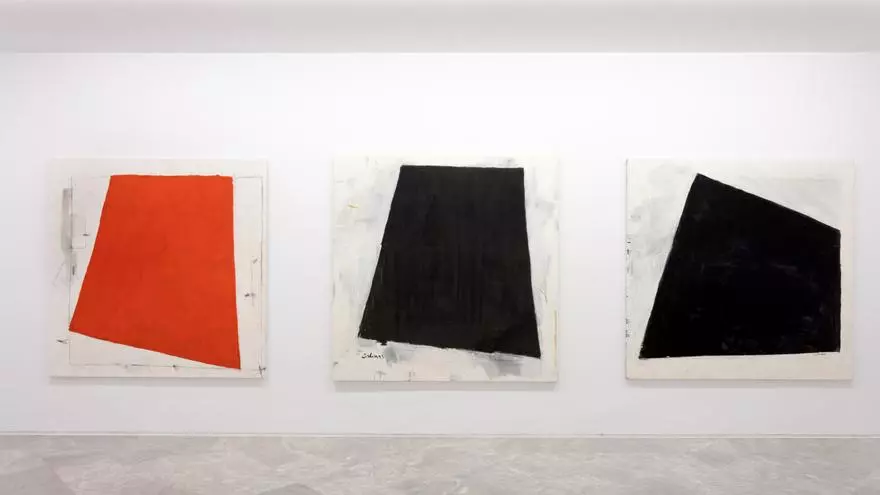
A self-taught artist
“Salinas will be defined on as many occasions as he was required to do so as strictly abstract,” words that Yñiguez collects to give the title to this exhibition and that summarize both “his artistic ideology and his career.” Salinas came to abstraction after self-taught portraits and a series of somber landscapes, and after coming into contact with the international avant-garde during his studies in Paris and his connection with his maternal family in Barcelona. In these years, in which he returned to Seville, his painting would be close to minimalism “exploring concepts such as space, limit, form and background (…) but with a continuous presence of the hand. An experimental stage where his painting quickly changes its appearance,” notes Yñiguez.
Three of the works included in the exhibition 'Manuel Salinas. Strict abstract' in the CAAC
Three of the works included in the exhibition 'Manuel Salinas. Strict abstract' at the CAAC / PEPE MORON
At the end of the 70s Salinas found the language of abstract expressionism, appearing in his works “the speed and freedom of the pictorial gesture” and opening the “plastic space that color would later occupy, converted into an autonomous form. To this conception of painting limited to basic elements such as line and color but used with as much expressiveness as emotionality, Manuel Salinas will add something of his own, something related to his innate taste for harmony and order: a kind of nostalgia for the geometry that can be traced even in his most gestural paintings,” details Yñiguez. In this stage that began in the eighties and will last his entire life, Salinas, the curator continues, “it is not that he organized his paintings from geometric approaches, as he could have done in the seventies with minimalism, but that he is the same process of painting that leads him to find, rather than search for, geometric reasons and relationships that balance the composition. The value of the painting resulting from the process will reveal that tension between the expressive gesture and the idea of order, between sensitive emotion and reason.”
From this moment on we cannot speak of stages or phases in his production, but rather of his own interest in the purely pictorial essence. A visual balance, very aesthetic, that made it very attractive to collectors. In his works, Manuel Salinas works over and over again on the same concept: “he paints the same painting (…) without a trace of monotony because each painting contains a new but very recognizable version of what [he] understands as the ideal image of the painting,” Yñiguez summarizes.
Some of the works in the exhibition 'Manuel Salinas. Strict abstract' / PEPE MORON
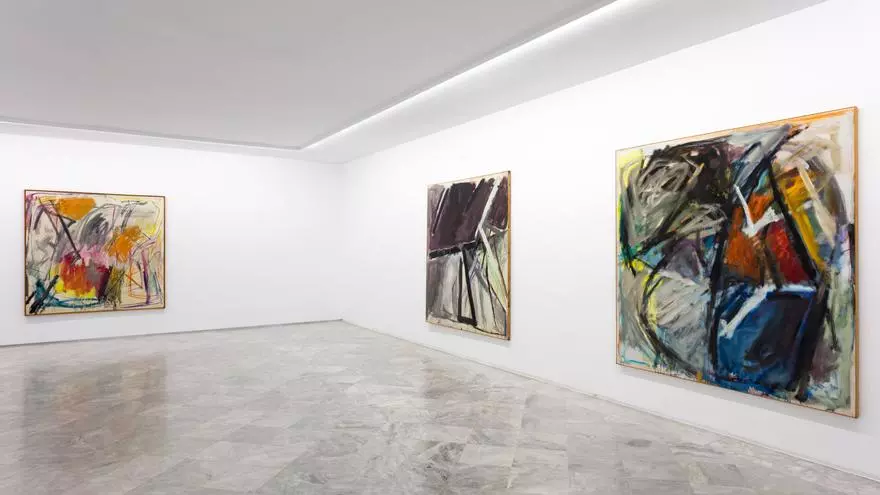
Towards the end of the eighties, Salinas's painting created his own and personal synthesis of abstract expressionism in which vibration, tension, immediacy and expressivity are combined, also linked to the possible influences of painters such as José Guerrero or Miguel Ángel Campano, as well as his own sensitivity educated in the baroque.
Coinciding with the exhibition at the CAAC, the Casa de Salinas (Mateos Gago, 39) collects photographs of the painter in the studio he had in his family home, a space with a long history but that preserves his palatial character. Manuel Salinas himself intervened decisively in the last substantial adaptation of the house in the 90s.


- July 15, 2025
Shot in the foot
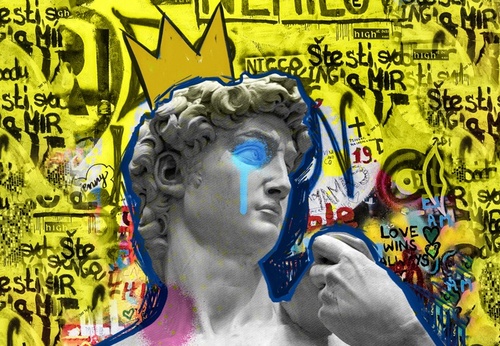
- July 15, 2025
Differences between modern art and contemporary art
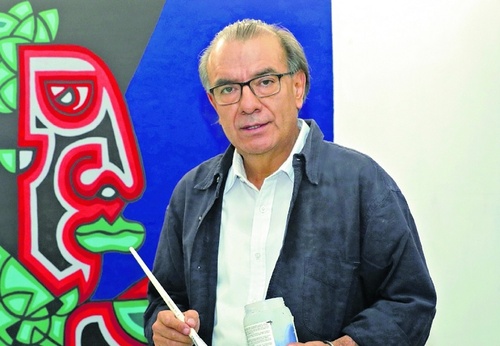
- July 15, 2025
Rudy Cottón Exhibition in Guatemala
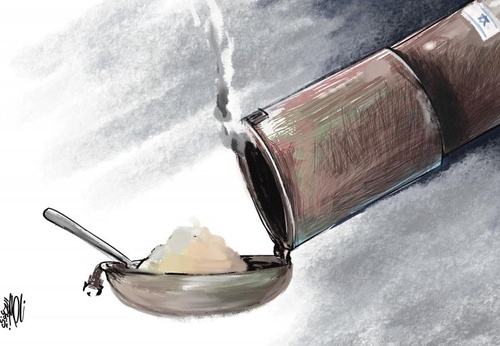
- July 15, 2025
Gallery Of Humor Drawing By Naser Jafari - Jordan_Part2
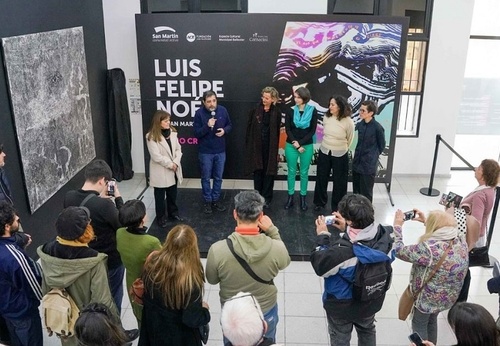
- July 15, 2025
Exhibition of a Legend of Latin American Visual Art
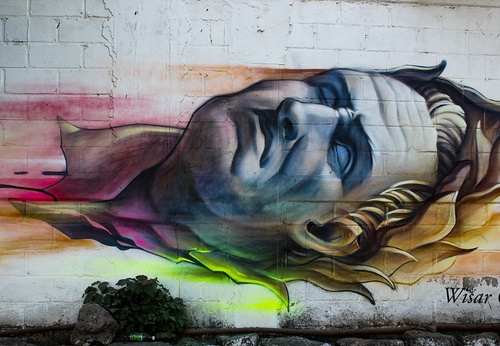
- July 15, 2025
Gallery Of Street Art By Bryan Molina - Mexico
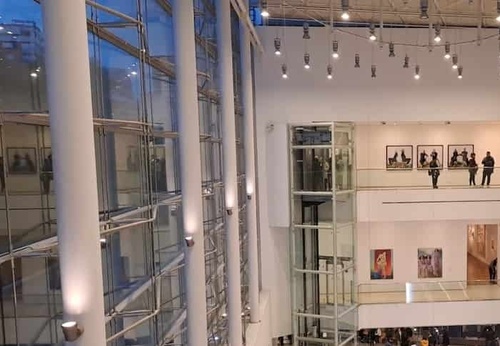
- July 14, 2025
An exhibition that says nothing

- July 14, 2025
Visual Techniques in Advertising Photography

- July 15, 2025
Rudy Cottón Exhibition in Guatemala

- July 15, 2025
Exhibition of a Legend of Latin America…

- July 14, 2025
An exhibition that says nothing

- July 12, 2025
Art as a tool for “a healthy and creati…

- July 12, 2025
The art of Páez Vilaró arrives in Villa…

- July 12, 2025
Circuits of the Future in Carlos Ortúza…

- July 11, 2025
Works by Six Latin American Artists

- July 10, 2025
The Voice of Latino Art in the Heart of…

- July 09, 2025
Douglas proposed in front of the painti…

- July 08, 2025
Unprecedented Botero Exhibition in Guan…

- July 07, 2025
Last chance to view LATINOAMERICANO exh…

- July 07, 2025
The contemporary art exhibition was ina…

- July 02, 2025
Hugo Correa Exhibits at Museo Ralli San…

- July 02, 2025
The Exhibition That Reimagines the Past…

- July 02, 2025
The Major Exhibition "Before America" …

- June 29, 2025
Peruvian painter Gerardo Chávez dies at…

- June 29, 2025
ARCOmadrid 2026 Opens Call for Entries …

- June 29, 2025
José María Velasco: The Landscape Artis…

- June 26, 2025
It houses 40 legacies of Latin American…

- June 18, 2025
Winners of the “Holosaide” event announ…

- October 08, 2023
Illustrations reflect the brutal Israel…

- December 25, 2023
The jury statement of the Iran-Brazil F…

- July 29, 2023
History of Caricature in Brazil

- April 20, 2024
Poignant Image of Grief Wins Mohammed S…

- March 21, 2024
The history of art in Palestine

- May 22, 2025
Brady Izquierdo’s Personal Exhibition O…

- September 01, 2023
Neural Filters in new photoshop 2023

- October 21, 2023
Erick Meyenberg and Tania Ragasol at th…

- March 14, 2024
museum of statue of van gogh

- May 25, 2025
Bordalo II to hold exhibition in Paris …

- August 09, 2023
Venezuela mural expresses solidarity wi…

- March 30, 2024
illustration websites in Latin America

- March 15, 2024
museum of sculpture of Salvador Dali

- May 20, 2024
Latin American Festival of Performing A…

- July 30, 2024
The artist from San Luis Mirta Celi rep…

- March 18, 2025
Works by Cuban Artist Eduardo Abela in …

- January 04, 2025
Material Art Fair 2025

- July 03, 2024
Newly discovered rock art in Venezuela

- October 30, 2023
Palestinian turns images of the Gaza co…

- November 07, 2024
The exhibition “The message behind Bote…

- February 18, 2024
7 Ways to Understand What Visual Arts A…

- May 15, 2024
Eleven murals for Gaza painted across t…

- January 02, 2025
13 commemorations that will mark the cu…

- October 08, 2023
Illustrations reflect the brutal Israel…

- October 17, 2023
The influence of Latin American artists…

- November 17, 2023
Fernando Botero's work is booming after…

- December 25, 2023
The jury statement of the Iran-Brazil F…

- July 29, 2023
Piracicaba International Humor Exhibiti…

- February 03, 2024
THE HISTORY OF NAIF ART

- November 06, 2023
Heba Zagout: Palestinian artist murdere…

- February 01, 2025
A maior exposição de Botero em Barcelona

- July 02, 2024
One of the largest urban art galleries …

- December 10, 2023
Sliman Mansour and Palestinian art on t…

- July 20, 2024
First International Mail Art Biennial 2…

- September 01, 2023
Neural Filters in new photoshop 2023

- March 14, 2024
museum of statue of van gogh

- October 30, 2023
Palestinian turns images of the Gaza co…

- October 23, 2023
Controversy over the project that will …

- February 06, 2024
Bolivian artists will be at the 2024 Ve…

- February 08, 2024


